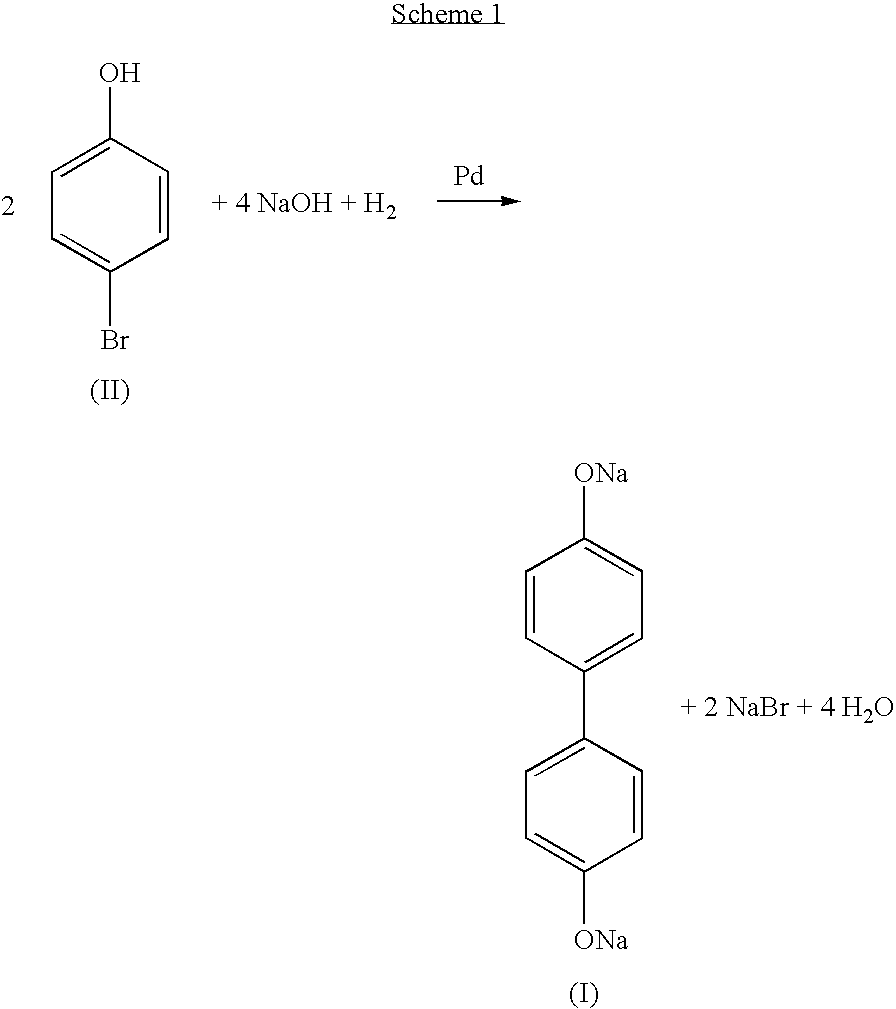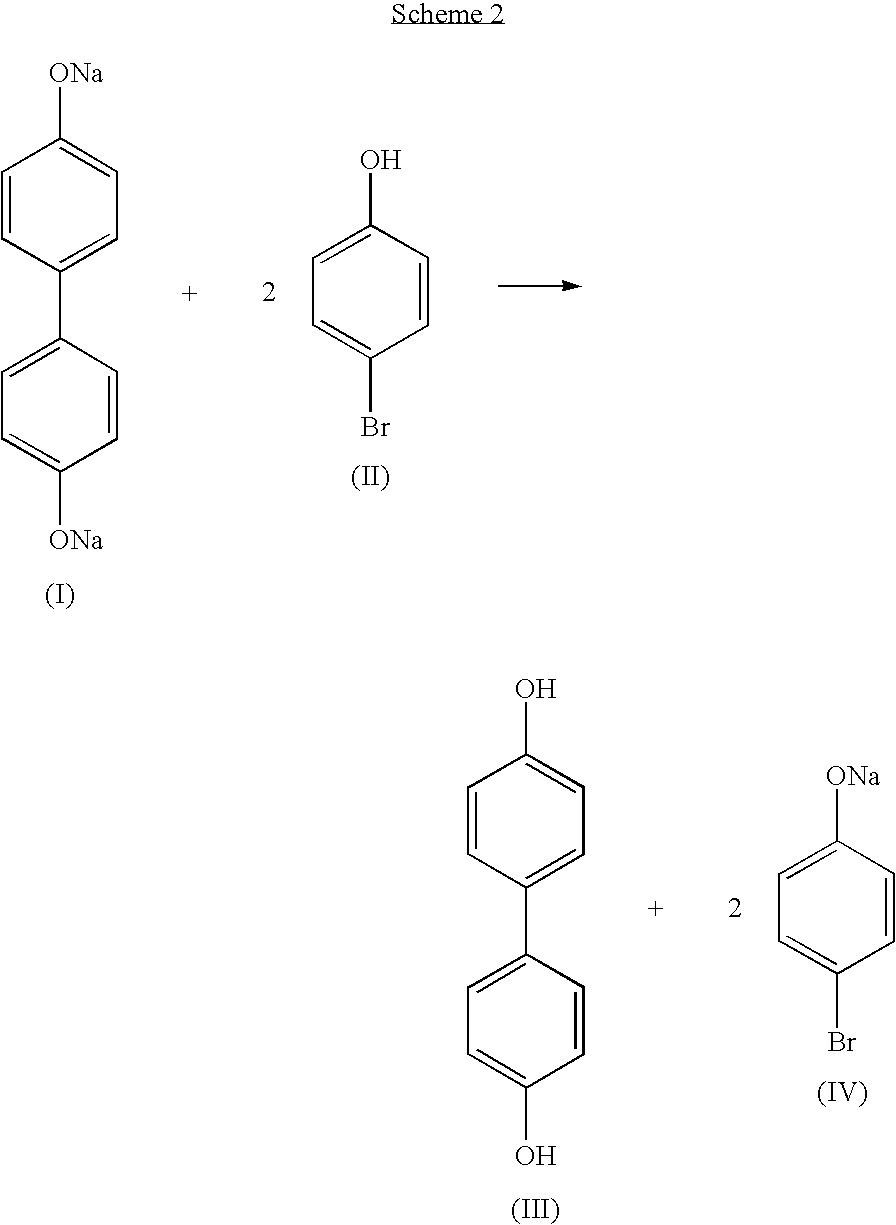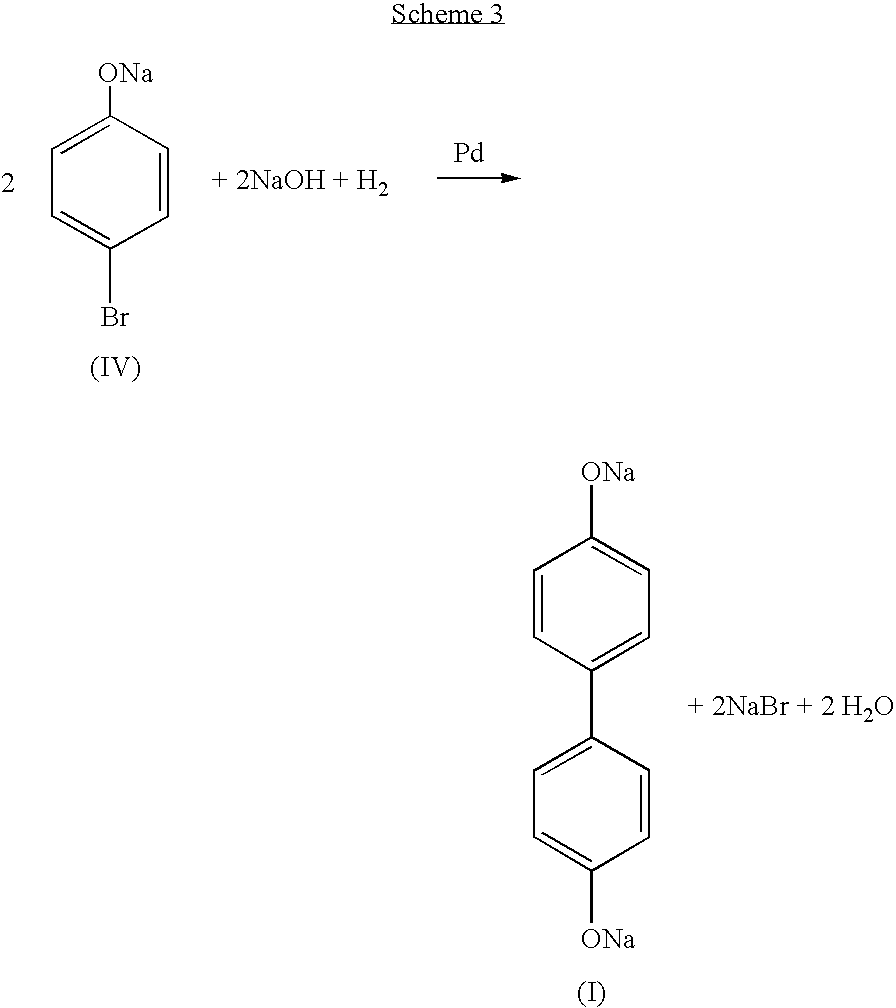Process for the recovery of dihydroxybiaryl compounds
a dihydroxybiaryl and compound technology, applied in the field of reductive coupling of monohydroxyaryl halide compounds, can solve the problems of high cost of nacl handling and disposal, and achieve the effect of being efficient and novel
- Summary
- Abstract
- Description
- Claims
- Application Information
AI Technical Summary
Benefits of technology
Problems solved by technology
Method used
Image
Examples
example 1
To a round bottom flask equipped with a magnetic stir bar was charged 1.073 g (5.76 mmol) of biphenol and 0.476 g (11.9 mmol) of NaOH and 9.102 g of water. A clear yellowish solution containing the sodium salt of biphenol was formed.
example 2
To the solution containing the sodium salt of biphenol from Example 1, 2.09 g (12.08 mmol) of p-bromophenol were added, and a precipitate formed. The solution containing the precipitate was then filtered, and the solid was recovered. HPLC analysis of the solid indicated that it contained 94.2% biphenol. Approximately, 0.8603 g were recovered, representing a 76% overall recovery.
example 3
The procedure of Example 2 was followed, except that prior to filtering, 9.91 g of water and 1.29 g of methanol were added to the solution to assist in preventing phase separation, and a fraction of the resulting solution (5.68 g) was filtered to separate the solid. An excess of 37% HCl (0.5695 g, molar amount needed to neutralize base was 0.2824 g) was added to the filtrate to neutralize all the base present, and the pH was measured to be around 0. The resulting solution had a small amount of solid present, and 8.245 g of methanol were added to achieve complete dissolution. This solution was then analyzed by HPLC for biphenol and p-bromophenol. The analysis showed the ratio of p-bromophenol to biphenol to be around 20:1 (3.41% to 0.17%) by weight, compared with the expected number of about 2:1 (2.09:1.073=1.94:1) if protonation had not occurred. The expected p-bromophenol concentration was 3.42%. The expected composition of biphenol if it were all still present would be 1.75%. Thi...
PUM
| Property | Measurement | Unit |
|---|---|---|
| Temperature | aaaaa | aaaaa |
| Temperature | aaaaa | aaaaa |
| Fraction | aaaaa | aaaaa |
Abstract
Description
Claims
Application Information
 Login to View More
Login to View More - R&D
- Intellectual Property
- Life Sciences
- Materials
- Tech Scout
- Unparalleled Data Quality
- Higher Quality Content
- 60% Fewer Hallucinations
Browse by: Latest US Patents, China's latest patents, Technical Efficacy Thesaurus, Application Domain, Technology Topic, Popular Technical Reports.
© 2025 PatSnap. All rights reserved.Legal|Privacy policy|Modern Slavery Act Transparency Statement|Sitemap|About US| Contact US: help@patsnap.com



